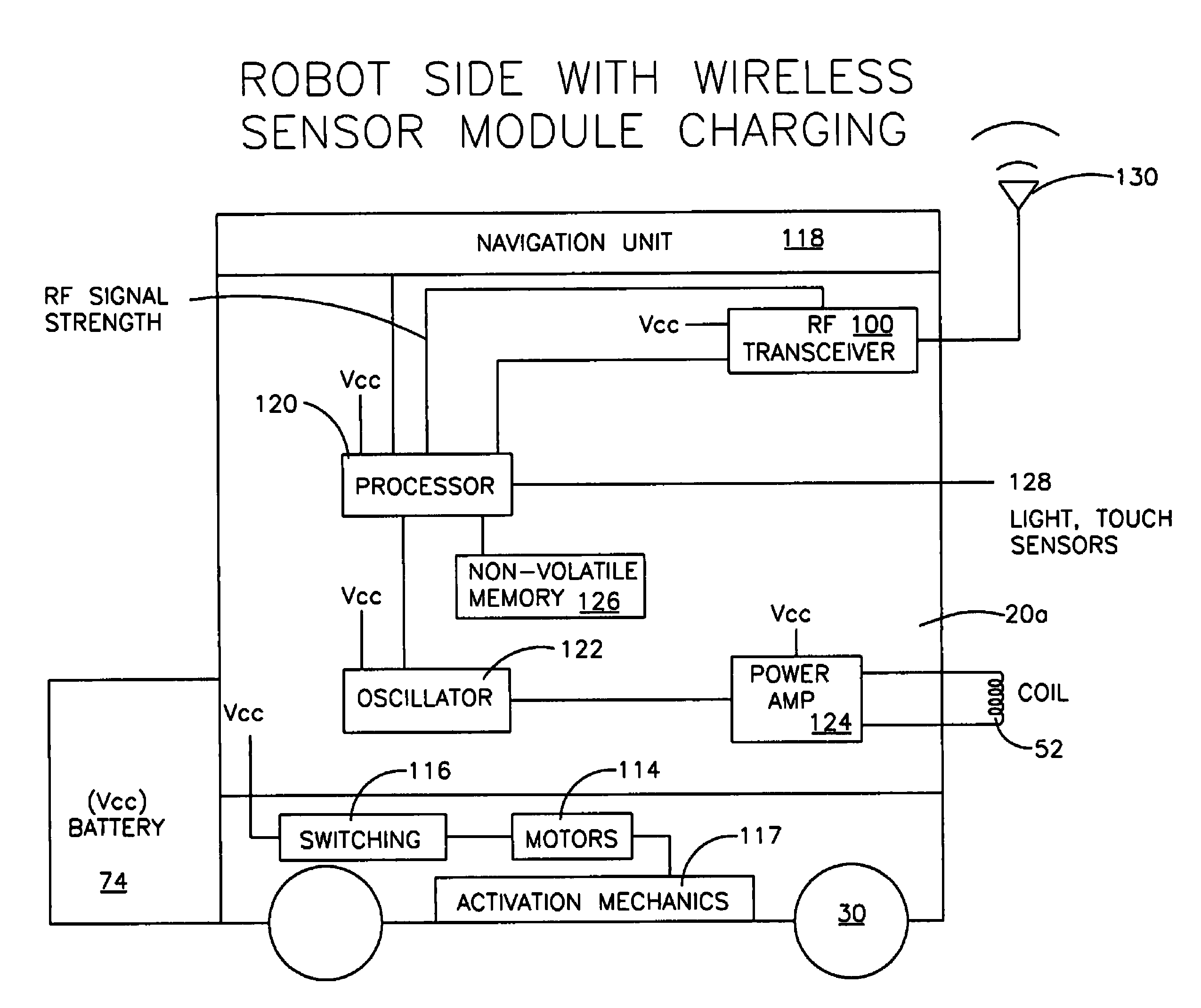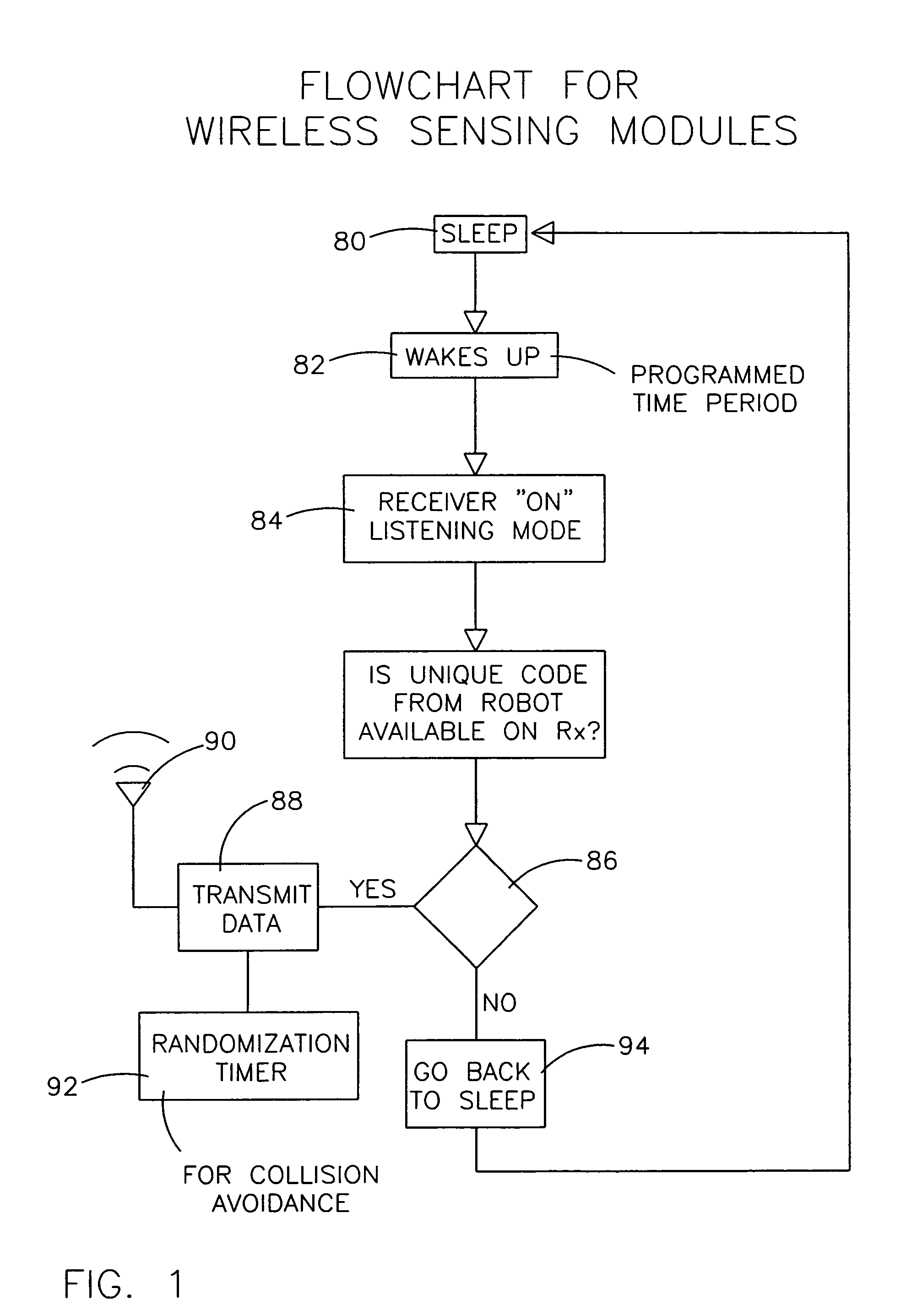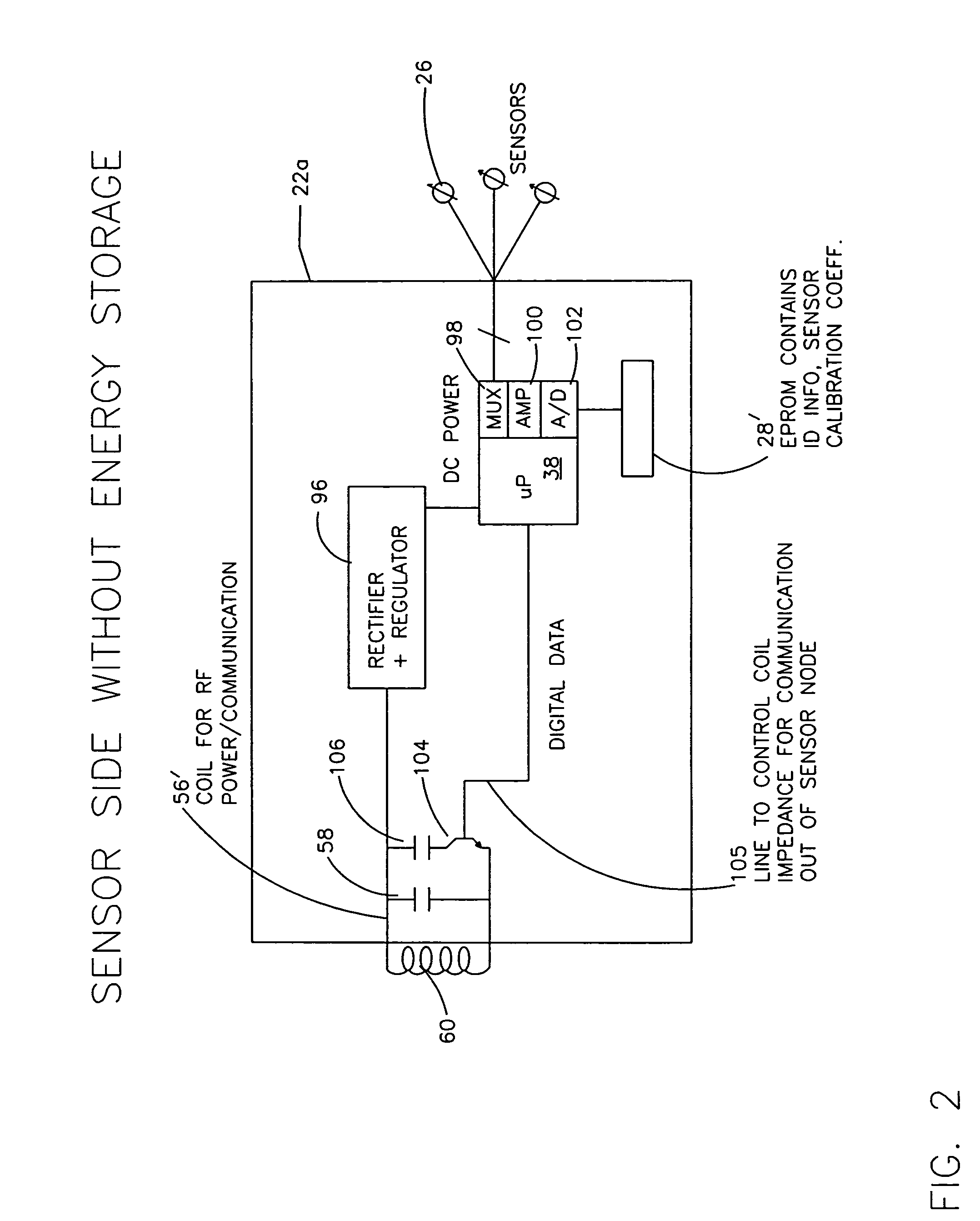Robotic system for powering and interrogating sensors
a robot system and sensor technology, applied in the field of sensors power management, can solve the problems of increasing public risk by reducing the amount of monies available for future maintenance and inspection, affecting the efficiency of inspection, and reducing the effect of people's risk
- Summary
- Abstract
- Description
- Claims
- Application Information
AI Technical Summary
Benefits of technology
Problems solved by technology
Method used
Image
Examples
Embodiment Construction
[0043]The present inventors recognized that unmanned vehicle or robot 20 could approach and wirelessly electromagnetically power a separate device, such as wireless sensing module 22, as shown in FIG. 7, or to an actuator (not shown). Unmanned vehicle 20 could wirelessly provide the power needed by wireless sensing module 22 for operating wireless sensing module 22 while unmanned vehicle 20 is nearby. The present inventors also recognized that unmanned vehicle 20 could also periodically wirelessly provide the power for charging or recharging batteries or capacitors 24 included with wireless sensing module 22 so wireless sensing module 22 could operate and transmit while unmanned vehicle 20 is far away. The present inventors also recognized that unmanned vehicle 22 could also wirelessly receive data from sensor 26 as it is collected by sensor 26. Alternatively, unmanned vehicle 20 could collect data that was collected over time and stored in data logging system 28 included with wirel...
PUM
 Login to View More
Login to View More Abstract
Description
Claims
Application Information
 Login to View More
Login to View More - R&D
- Intellectual Property
- Life Sciences
- Materials
- Tech Scout
- Unparalleled Data Quality
- Higher Quality Content
- 60% Fewer Hallucinations
Browse by: Latest US Patents, China's latest patents, Technical Efficacy Thesaurus, Application Domain, Technology Topic, Popular Technical Reports.
© 2025 PatSnap. All rights reserved.Legal|Privacy policy|Modern Slavery Act Transparency Statement|Sitemap|About US| Contact US: help@patsnap.com



